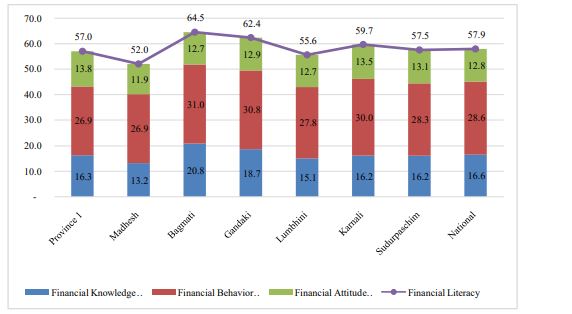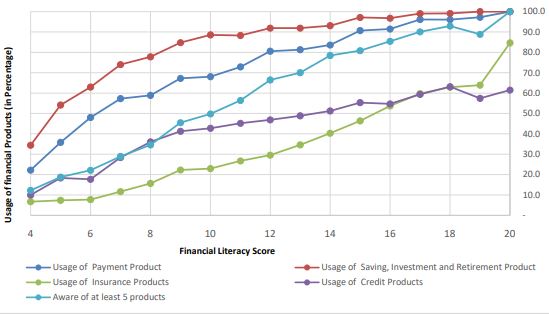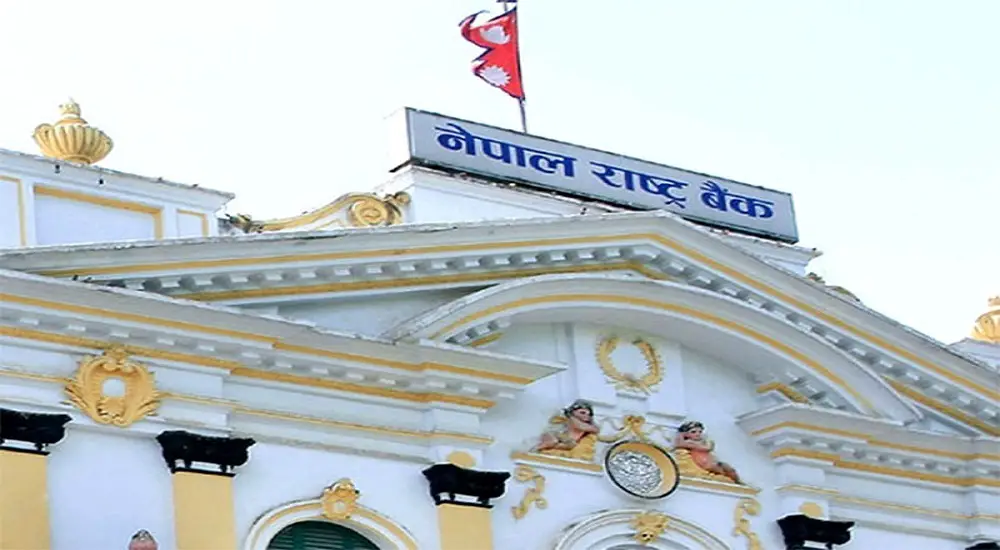As per a baseline survey by Nepal Rastra Bank, financial literacy in Nepal has reached 57.9 percent. The bank has published reports which observed the people’s financial reach in three different dimensions.
The study found 47.3 percent of the people with financial knowledge, 63.5 percent had financial behavior, and financial attitude 62.9 percent.
The does show an improving condition of Nepalis’ acquaintance with financial services but this could improve more in the years to come. The report showed that only 27.5 percent of the adult population scored at least on those dimensions of financial literacy.
Out of them, 36.5 percent of the adult population in financial knowledge, 56.6 percent in financial behavior, and 95.4 percent of adults in financial attitude scored the minimum score.

| Financial Literacy | Percent |
| Financial Knowledge | 36.5 |
| Financial Behaviour | 56.6 |
| Financial Attitude | 95.4 |
Check out: Digital Payment: Advantages and Disadvantages
Bagmati Province came atop in financial literacy in Nepal
In terms of financial literacy among the regions, Bagmati Province has the highest score of 64.5 percent. Madhesh Province scored the lowest with 52 percent. The bank says the discrepancy in the figure is due to the different levels of financial knowledge in each region.
The report shows a wide gulf between males and females in their familiarity with financial services in the country.
Among the genders, 61.8 percent of males have financial literacy which is 75 percent more than females. In financial knowledge, males scored 56.5 percent which is again more than females by 179 percent. The striking differences between the sexes are found in all regions.
Also read: NRB tells banks to close accounts without KYC-verification
Financial Literacy in Nepal in terms of age groups
People in the age group 18-30 scored 63.2 percent in financial literacy and in its dimensions. Education and access to smartphones and the internet are likely to have inspired a better indicator among the youth.
Particularly, people working in formal sectors, and those in high-level work have fared better in financial literacy than others. Nepal Rastra Bank ran its survey on 9,361 people over the age of 18 people from across the country.
Methodology
A multi-stage sampling method was chosen to select individuals. In the first stage, all from 77 districts, in the second stage, all types of local levels within the district, in the third stage, at least one local level, in the fourth stage, at least one ward and finally, the respondents were selected from the voters of the selected ward.
Financial products usage
The study looked into the usage of financial products to derive the status of financial inclusion. Among the indicators of financial use in the adult population, it was found that 73.78 percent used payment products, 86.64 percent used savings, investment, or retirement products, and 30.02 percent used insurance services. 46.34 percent in the survey used loan products.

| Financial products | Percent |
| Payment products | 73.78 |
| Savings, investment, and retirement products | 86.64 |
| Insurance products | 30.02 |
| Loan products | 46.34 |
About two-thirds of the adult population are familiar with at least 5 types of financial products. The report highlighted that 71.83 percent of the adult population is dependent on family and friends for savings or loans to meet their financial needs.



